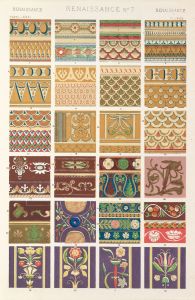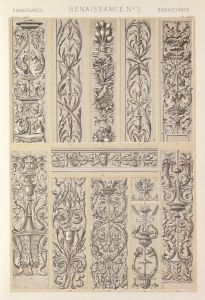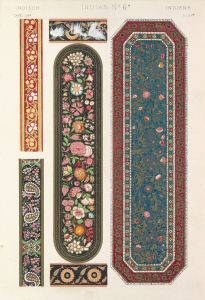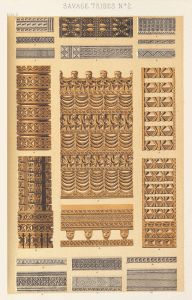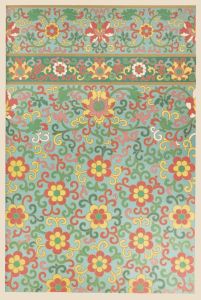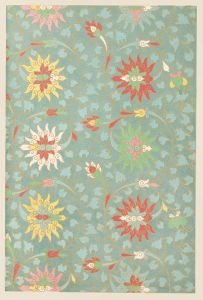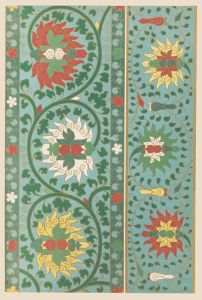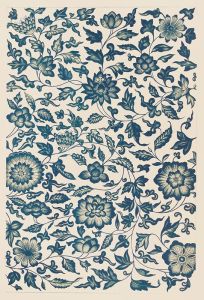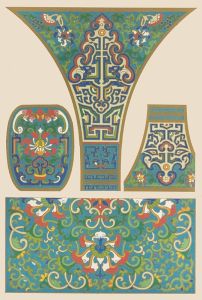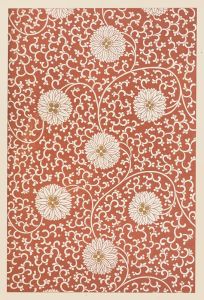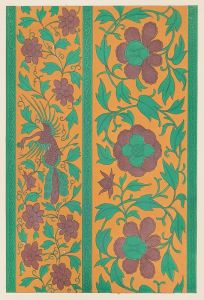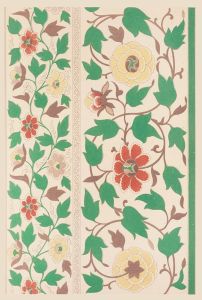
Examples of Chinese ornament, Pl.38
A hand-painted replica of Owen Jones’s masterpiece Examples of Chinese ornament, Pl.38, meticulously crafted by professional artists to capture the true essence of the original. Each piece is created with museum-quality canvas and rare mineral pigments, carefully painted by experienced artists with delicate brushstrokes and rich, layered colors to perfectly recreate the texture of the original artwork. Unlike machine-printed reproductions, this hand-painted version brings the painting to life, infused with the artist’s emotions and skill in every stroke. Whether for personal collection or home decoration, it instantly elevates the artistic atmosphere of any space.
"Examples of Chinese Ornament, Pl.38" is a plate from the influential design book "The Grammar of Ornament" by Owen Jones, first published in 1856. Owen Jones was a British architect and designer known for his work in color theory and his efforts to document and categorize decorative arts from various cultures around the world. His book, "The Grammar of Ornament," is a comprehensive study of patterns and motifs from different civilizations, aiming to serve as a source of inspiration for designers and architects.
Plate 38 specifically focuses on Chinese ornamentation, showcasing the intricate and diverse designs that are characteristic of Chinese decorative arts. The plate is part of a larger section dedicated to Chinese ornament, which highlights the unique aesthetic principles and motifs found in Chinese art and design. This section of the book reflects Jones's appreciation for the sophistication and historical depth of Chinese decorative traditions.
Chinese ornamentation is known for its use of symbolic motifs, vibrant colors, and intricate patterns. Common themes include floral designs, mythical creatures such as dragons and phoenixes, and geometric patterns. These elements are often imbued with cultural and philosophical significance, reflecting aspects of Chinese cosmology, mythology, and social values. The designs are typically symmetrical and balanced, emphasizing harmony and order, which are important concepts in Chinese aesthetics.
In "The Grammar of Ornament," Jones sought to present these designs in a way that was both educational and inspirational. He meticulously reproduced the patterns with attention to detail and color accuracy, using chromolithography, a method that allowed for vibrant and precise color printing. This technique was relatively new at the time and helped Jones convey the richness of the original artworks.
Jones's work was part of a broader 19th-century movement in Europe that sought to study and incorporate non-Western art and design into Western practices. This interest was partly driven by the expansion of global trade and colonialism, which exposed European artists and designers to a wide array of artistic traditions. While Jones's work contributed to a greater appreciation of global art forms, it is important to recognize the context of cultural exchange during this period, which was often marked by unequal power dynamics.
"Examples of Chinese Ornament, Pl.38" and the broader work of Owen Jones have had a lasting impact on the fields of design and architecture. By documenting and disseminating these patterns, Jones provided a valuable resource for artists and designers seeking to expand their visual vocabulary and draw inspiration from diverse cultural sources. His work continues to be studied and appreciated for its role in promoting cross-cultural understanding and appreciation of global decorative arts.





